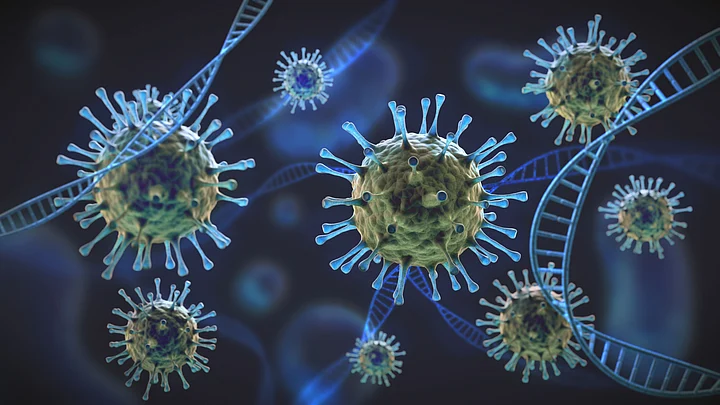The JN.1 COVID-19 subvariant has been classified as a 'variant of interest' by the World Health Organisation, separate from it's parent variant Omicron BA.2.86.
In their statement released on Tuesday, 19 December, also added that this isn't a cause for concern and that the strain does not pose much threat to public health.
An upsurge in COVID cases in some countries, including parts of India, coinciding with the rise in the JN.1 variant has sparked concerns among health experts and the general public.
FIT answers your FAQs.
First things first, what is a Variant of Interest?
A Variant of Interest (VOI) is a classification by the WHO to describe a SARS-CoV-2 variant with changes like improved ability to spread, cause serious disease, or circumvent immune response.
At the same time, unlike Variants of Concern (VOC), there is no evidence of VOIs having a detrimental change in disease severity.
This means that variants that need to be monitored for changes that could potentially cause severe outcomes are classified as VOI.
WHO has classified JN.1 as a 'variant of interest'. What does this mean?
JN.1 is a descendant of the Omicron subvariant Pirola variant (BA.2.86). Omicron itself was classified as a variant of concern (VOC) by the WHO in 2021. This means that all its subsequent subvariants including BA.2.86 automatically be considered variants of concern.
However, WHO has said that it is classifying JN.1 as a VOI separate from its parent lineage and will be monitored separately, because of how rapidly it's been spreading globally in the past few weeks.
How is JN.1 different from other subvariants of Omicron?
Scientists believe JN.1 is so infectious because it has a different spike protein. This is because mutation in the spike protein makes it difficult for the immune cells to attack the pathogens.
A recent study published in the medical journal Lancet found that the one mutation alone gives JN.1 the ability to evade immune response far better than its parent BA.2.86 subvariant.
Do the existing COVID-19 vaccines protect against JN.1 too?
According to the WHO, the immune escape potential of JN.1 depends on the immune background of the population tested.
"Despite the reduction in JN.1 neutralization, protection by XBB.1.5 monovalent vaccines are likely to be effective against JN."The WHO
However, experts that FIT has spoken to in the past have explained, vaccines are meant to protect against severe illness, not infection.
Does this mean it's more dangerous?
Not necessarily. According to the WHO, so far there is no evidence to suggest that JN.1 is more virulent (causing more severe illness) than other variants in circulation.
"The additional public health risk posed by JN.1 is currently evaluated as low at the global level."The WHO
However, speaking to FIT about Omicron and it's subvariant B.2 back in 2021, Virologist, Dr Shahid Jameel said, "Although early signs are encouraging that the virus may not be causing severe disease, how individual mutations behave and how a combination of mutations behave cannot really be predicted very easily. So, let us not be complacent."
People have been asked to take necessary precautions as scientists warn that JN.1 is likely to cause a further increase in COVID especially in countries entering the winter season.
This could potentially mean bad news for vulnerable groups (those with comorbidities, immunocompromised people, and elderly people), and also put a strain on medical facilities.
Which countries has JN.1 been detected in?
JN.1 was first detected in in Luxembourg, in August 2023. According to WHO's data, since then it has been reported in 41 countries, with the largest proportion of sequenced cases coming from the US, Singapore, Canada, the UK, and Sweden.
The subvariant was first detected in India in the state of Kerala earlier this month in a 79-year-old woman, who has since recovered.
What measures are being taken in India to prevent its spread?
The Union Ministry of Health and Family Welfare (MoHFW) released a fresh advisory on Monday, 18 December, asking states to ramp up testing and preparedness in medical facilities, as well as monitor the rise in cases.
States like Kerala and Karnataka which are currently seeing a surge in cases have also announced that necessary measures are being taken to contain the spread and monitor the movement of the the subvariant.
How can you protect yourself?
By doing what you have been doing all along to protect against COVID-19.
Wear a mask. Especially in crowded spaces.
Wash your hands regularly.
Avoid going out into crowded spaces if you have flu-like symptoms.
Make sure indoor spaces are well ventilated.
Get vaccinated if you already haven't. Consider taking a booster dose of the COVID-19 vaccine if you fall in the vulnerable catagory.

